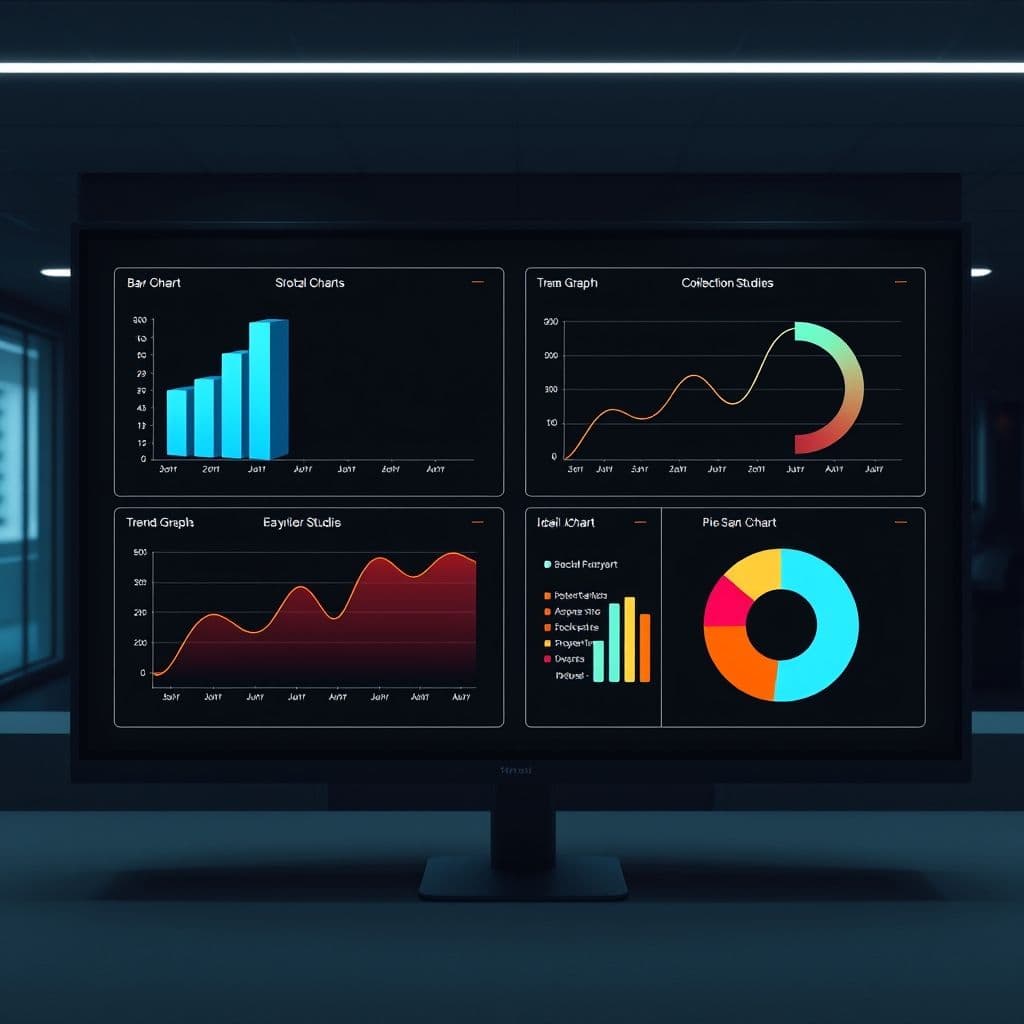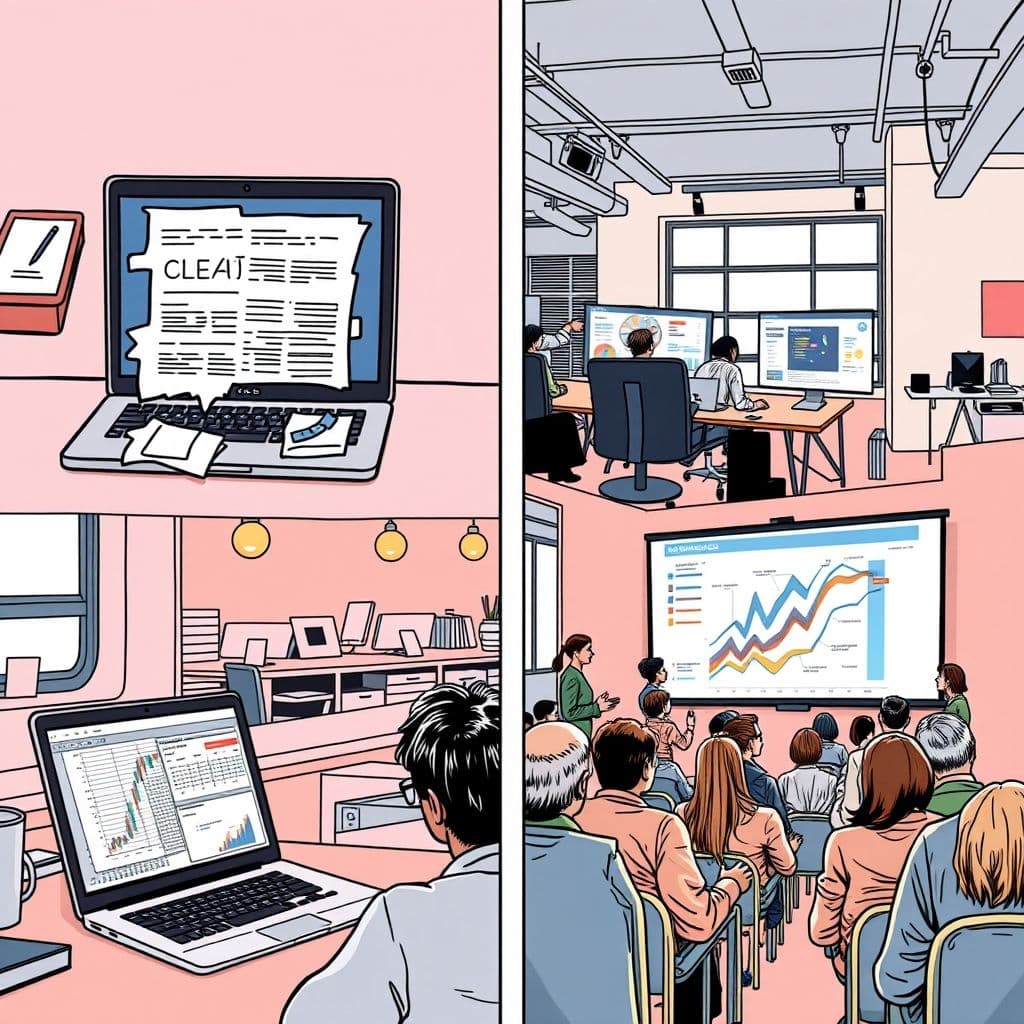Master Visual Data Storytelling: A Step-by-Step Guide to Engaging Data Narratives

In today's data-driven world, the ability to tell compelling stories with data is a superpower. Visual Data Storytelling combines the art of storytelling with the science of data visualization to create narratives that inform, persuade, and inspire. Whether you're a business analyst, marketer, or researcher, mastering this skill will help you communicate complex information effectively. This guide will walk you through each step of the process, from understanding basic visualization techniques to crafting engaging data narratives. View original learning path
Step 1: Understand the Basics of Data Visualization
Before diving into storytelling, you need to grasp the fundamentals of data visualization. Start by identifying different data types—quantitative, qualitative, temporal, and categorical—as each requires specific visualization techniques. Familiarize yourself with common tools like Tableau, Power BI, or Python libraries such as Matplotlib and Seaborn. Practice creating basic charts to represent different data relationships: use bar charts for comparisons, line charts for trends, and scatter plots for correlations. Remember, the goal is to make data accessible and understandable at a glance.

Step 2: Learn the Principles of Visual Design
Great data visualizations are not just accurate; they're also visually appealing. Study color theory to understand how different hues evoke emotions and highlight important data points. Choose typography that enhances readability—sans-serif fonts like Arial or Helvetica work well for digital displays. Pay attention to layout and composition; use grids to align elements and white space to prevent clutter. A well-designed visualization guides the viewer's eye naturally through the data story.
Step 3: Acquire Data Analysis Skills
Behind every great data story is solid analysis. Learn to clean and preprocess data by handling missing values and outliers. Master aggregation techniques like grouping and summarizing to reveal patterns. Basic statistical knowledge—understanding measures of central tendency, distribution, and correlation—will help you identify meaningful insights. Remember, your visualizations are only as good as the data behind them, so invest time in thorough analysis.
Step 4: Understand Storytelling Techniques
Data storytelling follows classic narrative structures. Begin with context (what's the background?), introduce conflict (what problem does the data reveal?), and conclude with resolution (what actions should be taken?). Use emotional appeal to connect with your audience—highlight how the data affects real people. Keep your audience engaged by posing questions and revealing insights gradually, like chapters in a book.

Step 5: Choose the Right Visualization Type
Selecting the appropriate chart is crucial. Use bar charts to compare discrete categories, line charts to show trends over time, and pie charts sparingly for part-to-whole relationships (only when you have few categories). More complex data might require heat maps, bubble charts, or tree maps. Always ask: 'What question is this visualization answering?' Let that guide your choice.
Step 6: Design Engaging Visuals
Now, bring your visualizations to life. Choose a color palette that's accessible (consider color blindness) and aligns with your brand or message. Create visual hierarchy—make the most important data stand out through size, position, or color. Add thoughtful annotations and labels to guide interpretation without overwhelming the viewer. Remember: every design element should serve the story.
Step 7: Tell a Compelling Story with Data
Combine your analysis and visuals into a cohesive narrative. Identify 2-3 key insights that form the backbone of your story. Structure your presentation logically: introduce the topic, present supporting data, address potential counterpoints, and conclude with actionable recommendations. Use visuals to emphasize your points, not decorate slides. Practice delivering your story until it feels natural.
Step 8: Practice and Iterate
Create mock projects using publicly available datasets. Seek feedback from colleagues or online communities—ask what story they take away from your visualizations. Refine based on input, focusing on clarity and impact. Build a portfolio of diverse data stories to showcase your growing skills.
Step 9: Stay Updated with Latest Trends
The field evolves rapidly. Follow experts like Edward Tufte and Alberto Cairo. Explore emerging tools like Observable or Flourish. Attend conferences like the Visualized conference or Tapestry. Subscribe to blogs like Storytelling with Data. Continuous learning will keep your skills sharp and your stories fresh.
Conclusion
Visual Data Storytelling is a powerful skill that combines analytical rigor with creative expression. By mastering these steps—from foundational visualization techniques to advanced narrative structures—you'll transform dry statistics into compelling stories that drive understanding and action. Remember, great data stories don't just present information; they create meaning and inspire change.
Frequently Asked Questions
- How long does it take to master Visual Data Storytelling?
- While you can learn the basics in a few weeks, mastery comes with consistent practice over months or years. Focus on incremental improvement—each project will make you better at both analysis and storytelling.
- What are common mistakes beginners make?
- Three frequent pitfalls: 1) Overloading visuals with too much data, 2) Choosing flashy designs over clarity, and 3) Not defining a clear narrative before creating visuals. Start simple, focus on one key message per visualization, and always keep your audience in mind.
- Do I need to be an artist to create good data visualizations?
- Not at all! While design skills help, the most important aspects are understanding your data and structuring a clear story. Many tools offer templates and style guides to help with visual polish. Focus first on accuracy and clarity—aesthetics can follow.





